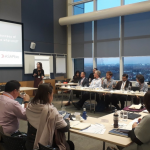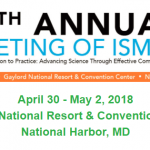Featuring the dropping of an open access trial by the Gates Foundation and Science, how Crossref can help medical publications professionals, and a new tool for explaining the nuances of open access terms.
Open access trial between the Gates Foundation and Science ends abruptly via Nature blogs
With the launch of its Gates Open Research platform in 2017, the Bill and Melinda Gates Foundation introduced the most comprehensive open access policy of any large funder to date, requiring all publications on Gates Foundation-funded research to be published with immediate open access under a CC BY licence. This policy resulted in a pushback from some publishers, many of whom did not permit open access publishing on these terms. One such publisher was the American Association for the Advancement of Science (AAAS), which publishes the prestigious journal Science. To try and work around these difficulties, the two organizations launched a deal to explore mutually acceptable open access options. The Gates Foundation paid around $100 000 for the pilot’s first year, in which 16 papers were published. The deal was then renewed for an undisclosed sum and a total of 26 papers by Gates Foundation-funded researchers have been published in the 18 months since the trial began. However, AAAS ended the pilot partnership last month. Neither party commented on why the pilot ended, but a report on the outcomes is due to be published later in the year.
Just how open is your open access licence? via SPARC
It’s widely known that open access terminology can be confusing; the latest resource released by open access advocacy group, SPARC, sets out to change that. Developed in collaboration with open access mega journal PLOS and the Open Access Scholarly Publishers Association, the HowOpenIsIt? Open Access Guide aims to present a jargon-free explanation of all of the variables in open access licensing, organized under six headings: reader rights, reuse rights, copyrights, author posting rights, automatic posting and machine readability. The spectrum is designed to fully explain all of the different open access options and to help authors make informed decisions about where to publish.
Preprint: do prestigious institutions do the best research? via bioRxiv
The somewhat nebulous idea of prestige is one that dominates academia and many wish that it wouldn’t. Prestigious research institutions are 65% more likely to have their grant application accepted and the grant sums they are awarded are, on average, 50% larger than for other institutions. This study set out to find whether this advantage was deserved. Although such evaluations are difficult to carry out empirically, the results suggested that less eminent institutions may provide funders with better value for money; on average they produced 65% more publications and achieved a 35% higher citation impact per dollar. This study raises interesting questions about the implicit biases of those awarding grants and argues that a more evidence-based approach to awarding grants should be adopted.
Is Crossref the medical publisher’s ‘new best friend’? via Open Pharma
The world of metadata can seem daunting, but understanding how metadata works is becoming increasingly essential to navigate and track the millions of research papers that are published every year. In this new guest post on the Open Pharma blog, Katie Chase from H1 explores how metadata aficionado Crossref can help medical publishing professionals in their day-to-day work. The piece explains what Crossref is and what it can do to help users navigate the ever-accumulating metadata surrounding scholarly publishing.
Elsevier blocks journal access for researchers in Germany and Sweden via Nature
Following the breakdown of negotiations between publishing giant Elsevier and consortiums of German and Swedish universities, access to Elsevier journals has now been cancelled for researchers across hundreds of universities and research organizations. Elsevier is now negotiating with individual research institutions whose contracts have expired. With determination from both sides, it is hard to tell what a final resolution will look like, or even if it will be possible.






